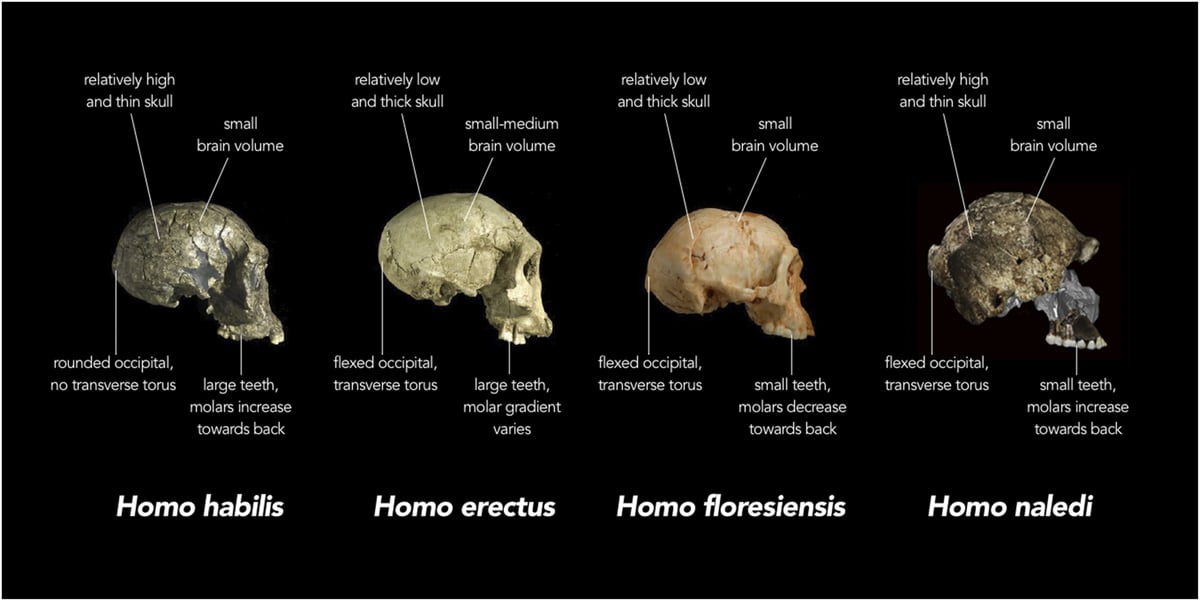A new species of the genus Homo
There’s a new (extinct) hominin on the block (in a cave system in Africa): Homo naledi.

Basically, Homo naledi had humanlike hands, legs, and feet, but tiny little australopithecine skulls, i.e., brains.
And, there are a lot of them, fossil-wise: “Representing at least 15 individuals with most skeletal elements repeated multiple times, this is the largest assemblage of a single species of hominins yet discovered in Africa.”
But we don’t yet know exactly how long ago they lived: maybe two million years ago, when the Homo genus emerged, or as late as a hundred thousand years ago, when it contracted to, well, us. In an accompanying article, Chris Stringer gets a little testy about it.
Frustratingly, the rich and informative H. naledi material remains undated. Given that this hominin material could conceivably even date within the last 100,000 years, I am puzzled by the apparent lack of attempts to estimate its age. This could have been achieved directly via radiocarbon dating (even if only to test whether the material lies beyond the effective range of that method) or indirectly based on ancient DNA samples. For example, after ancient DNA was successfully recovered from the Sima de los Huesos fossils, it was used to date them to about 400,000 years old (Meyer et al., 2014). Moreover, tests on even small fragments of bone and tooth enamel could have narrowed down the possible age range and at least ruled out either a very ancient or very young age (Grün, 2006).
As Dan Cohen points out, this discovery is also unusual in that it didn’t make its splash at Science or Nature, but eLife, a free, open-access journal. Study leader Lee Berger tells Buzzfeed the article was rejected by Nature because the authors couldn’t meet the mag’s demands to squeeze the whole thing into 2500 words. Well, whatever the reason for going open-access, we of the science-following-but-not-institutional-password-having-audience approve.
Update: Ed Yong has a terrific account of the discovery, with a ripping narrative about the caving team’s expedition and an intelligent analysis of the new species and its implications. Well worth reading.





Stay Connected